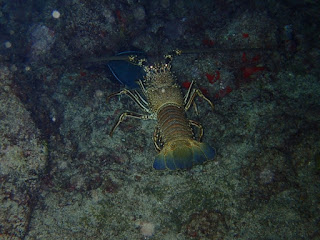(Text, Photos: Eleni Kytinou)
I am Eleni Kytinou, a Greek
marine biologist invited to join this expedition mainly for diving support of
the research. At the same time I am starting my PhD, focused on marine food
webs. The first part of our trip is just completed, after spending five
wonderful days in the underwater world of this South Atlantic Island.
The terrestrial part of this very
special volcanic island is quite dry, steep and with little indigenous
vegetation but the landscape is completely different when you have a look under
the sea surface. At first sight underwater, there was so much action taking
place out there, that you couldn’t decide where to focus on.
The visibility was poorer than in
the oligotrophic eastern Mediterranean, where I’ve done most of my research and
there were strong currents.
Great abundances of fish grazing
in groups, and the biggest abundances of groupers (apex predators that play a
very important role in the ecosystem function) ever seen in my life…
The islands hosts the second
biggest population of green turtles (Chelonia mydas)
in the entire Atlantic during the nesting period, in the peak of which we were
able to make our research visit. When they come to land to nest, they create
typical traces along the whole beach:
During many dives we encountered green turtles. During some snorkeling
close to their main nesting sand beach (Long Beach, north of Georgetown) we
were surrounded by five of these wonderful animals. They examined us thoroughly
and swam away...
We also recorded some very
interesting rhodolith beds, which are a typical feature of Ascension’s
infralittoral:
During our night dives we
encountered many moray eels (apex predators), lobsters, but also Galapagos
sharks.











Congratulations
ReplyDelete